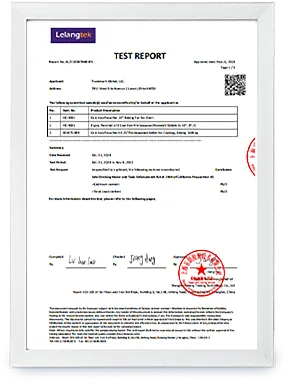
cast iron pan
The Timeless Versatility of Cast Iron Pans
Cast iron pans are a cherished staple in kitchens around the world, their rich history and remarkable versatility making them a favorite among both amateur cooks and professional chefs. Renowned for their durability and ability to retain heat, these pans have transcended generations, continuing to play a crucial role in modern cooking.
The origins of cast iron cookware date back to the 5th century in China, but it wasn’t until the 18th century that it gained popularity in Europe and subsequently in America. The manufacturing process involves pouring molten iron into molds to create a sturdy and heavy pan that can withstand high temperatures. This unique construction provides cast iron pans with excellent heat retention and even cooking, making them ideal for a wide range of dishes—from searing meats to baking cornbread.
One of the standout features of cast iron pans is their ability to develop a natural non-stick surface over time, a benefit known as seasoning. Seasoning refers to the process of coating the pan with oil and heating it, creating a polymerized layer that prevents food from sticking. This process not only enhances the cooking experience but also imparts a distinctive flavor to the food, particularly in dishes like fried chicken or sautéed vegetables.
cast iron pan

Moreover, cast iron pans are incredibly versatile
. They can be used on the stovetop, in the oven, or even over an open flame, making them perfect for everything from stovetop sautéing to oven-baked casseroles. Many cooks appreciate their ability to transition seamlessly from cooking on the stove to serving at the table, adding rustic charm to any dining experience.Care for cast iron pans is essential to maintain their performance and longevity. Unlike typical non-stick cookware, they cannot be washed with soap, as this can strip away the seasoning. Instead, a simple rinse with hot water and a gentle scrub with a stiff brush is typically sufficient. After cleaning, it’s crucial to dry the pan thoroughly and apply a thin layer of oil to preserve the seasoning. With proper care, a cast iron pan can last for decades, often being passed down through generations as a family heirloom.
Another advantage of cast iron is its ability to withstand high cooking temperatures, making it an excellent choice for searing steaks or frying foods. Additionally, the iron may contribute to dietary iron intake, which is beneficial for those with iron deficiencies. As consumers become more interested in cooking with healthier and more sustainable materials, cast iron pans have found a resurgence in popularity.
In conclusion, the cast iron pan stands out not only as a tool for cooking but as a testament to tradition and craftsmanship. With their remarkable ability to retain heat, develop a natural non-stick surface, and enhance the flavors of food, it is no wonder that these pans have become a beloved item in kitchens everywhere. Whether you are a seasoned cook or just starting, investing in a cast iron pan is a decision that promises to enrich your culinary journey for years to come.
-
Season Cast Iron Perfectly with GPT-4 Turbo TipsNewsAug.01,2025
-
High Quality Cast Iron Cookware - Baixiang County Zhongda MachineryNewsAug.01,2025
-
Premium Cast Iron Pan: Durable & Perfect HeatNewsAug.01,2025
-
High Quality Kitchen Durable Black Round Cast Iron Cookware Pancake Crepe Pan-Baixiang County Zhongda Machinery Manufacturing Co., Ltd.NewsAug.01,2025
-
Cast Iron Cookware - Baixiang County Zhongda Machinery | Nonstick, Heat ResistanceNewsAug.01,2025
-
High Quality Kitchen Durable Black Round Cast Iron Cookware - Baixiang County Zhongda Machinery | Non-Stick, Heat Retention, DurableNewsJul.31,2025


